A tribute to a fighting ship and a family member who served aboard her.
“To be prepared for war is one of the most effectual ways of preserving peace.”
George Washington, 1st President of the United States
The battleship Colorado began life as part of the Naval Appropriation act of 1916. Her Keel would be laid May 19, 1919 and she would be launched at 12:35 PM, Tuesday, March 22, 1921.
Paradoxically, the Washington Conference on Limitation of Armament of 1921 almost sent this new vessel to the scrap yard, but Japanese reluctance to dismantle one of their capital ships would drive the other powers to salvage some of their capital ships that were slated for dismantling as well. The compromise allowed the United States to finish commissioning its two battleships, both Maryland Class Super-Dreadnaughts, the West Virginia and the Colorado. The Colorado would undergo two years of outfitting and be commissioned August 30th, 1923.
Future crewman Melvin L. (Mel) Brady was born in Ione, Oregon, March 27, 1923.
Her shakedown cruise would take her to Europe, departing New York December 29, 1923. She arrived in Portsmouth Harbor in early January. Britons were left breathless by what they witnessed as they viewed this magnificent fighting ship for the first time.
From her sweeping Clipper Bow to her four gun turrets, each housing a pair of 16 inch naval rifles, her 624 foot length, all declared her to be a Fighting Ship. Called the “Electric Ship”, her state of the art systems were a marvel of ingenuity. Four 8,000 horsepower electric motors drove her propellers to a top speed of 21 knots, plus all auxiliary machinery was powered by electricity.
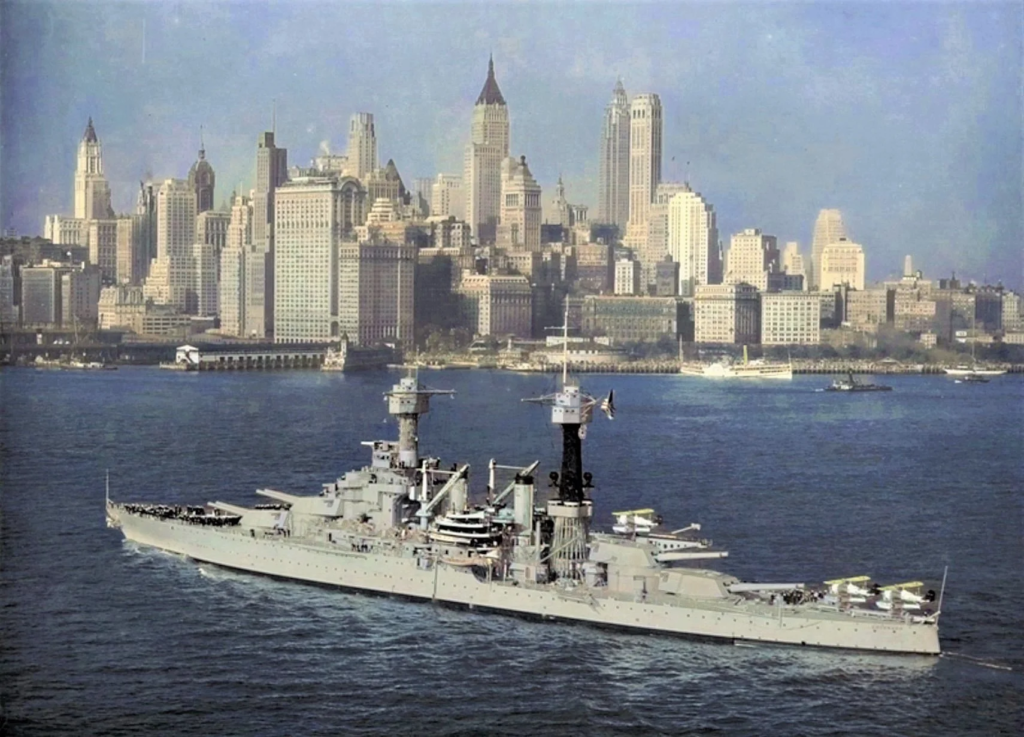
The Colorado would complete her maiden voyage by visiting ports of call, Cherbourg and Villefranche in France; Naples in Italy, and finishing the tour at the British Naval Base at Gibraltar; arriving in New York February 15, 1924 to a thunderous welcome.
After arriving home she would undergo further trials and calibrations and then transited the Panama Canal to join the Pacific Battle Fleet off the California coast. Participating in a goodwill tour from mid June to September 1925 that included ports of call at Honolulu, Sydney, Australia and Auckland New Zealand, then returning to routine operations off the California coast.
Back to Atlantic waters, she would conduct joint Army/Navy amphibious exercise in the Caribbean, one month later she would run aground off Cape Hatteras, North Carolina prolonging a shipyard overhaul. Then it was back to the Pacific Fleet off San Pedro, California. The Colorado and the men who manned her would finish the 1920s training and become the fighting crew that befits a fighting ship.

June 3rd, 1930 and a mysterious fire breaks out in the plotting room, the fire control center for her main batteries, her big guns. In a losing eight hour battle personally commanded and led by Captain W. S. Miller, he would be forced to order the flooding of two compartments with sea water, ruining the intricate electrical system. A board of inquiry would determine that phonograph needles or something like them were pushed through the insulation of the electrical cables causing the cables to short out, no perpetrator was ever found.
The 1930s would prove to be years of both tranquility and turmoil as the rumblings of the approaching Second World War reverberated with belligerence and saber rattling.
In 1932 she was dispatched to Long Beach, California to help with earthquake damage.
June 15, 1937, NROTC students from the University of Washington board the Colorado, four days later the University of California, Berkley NROTC students board her and departed the west coast for training in waters off Hawaii.
Liberty is canceled when the Colorado is assigned to the search for famed aviatrix Amelia Earhart, whose plane has disappeared in the vast expanses of the Equatorial Pacific.

July 3, the ship and its contingent of students begin the task of conducting the official search for the missing aviatrix Amelia Earhart and her co-pilot Fred Noonan. The ship’s additional duties included refueling the smaller search vessels plus using her three float planes to search the sparsely populated Islands and reefs. Once in the search area she would steam a horse shoe shaped course in, around and through the scattered islands, reefs and sandbars in her search.
After a thorough search of the Island group and refueling the smaller search vessels the Colorado was relieved of her search duties and made for the west coast to return the students to their respective schools. It would be these students and other young Americans to whom the burdens of defending democracy would fall.
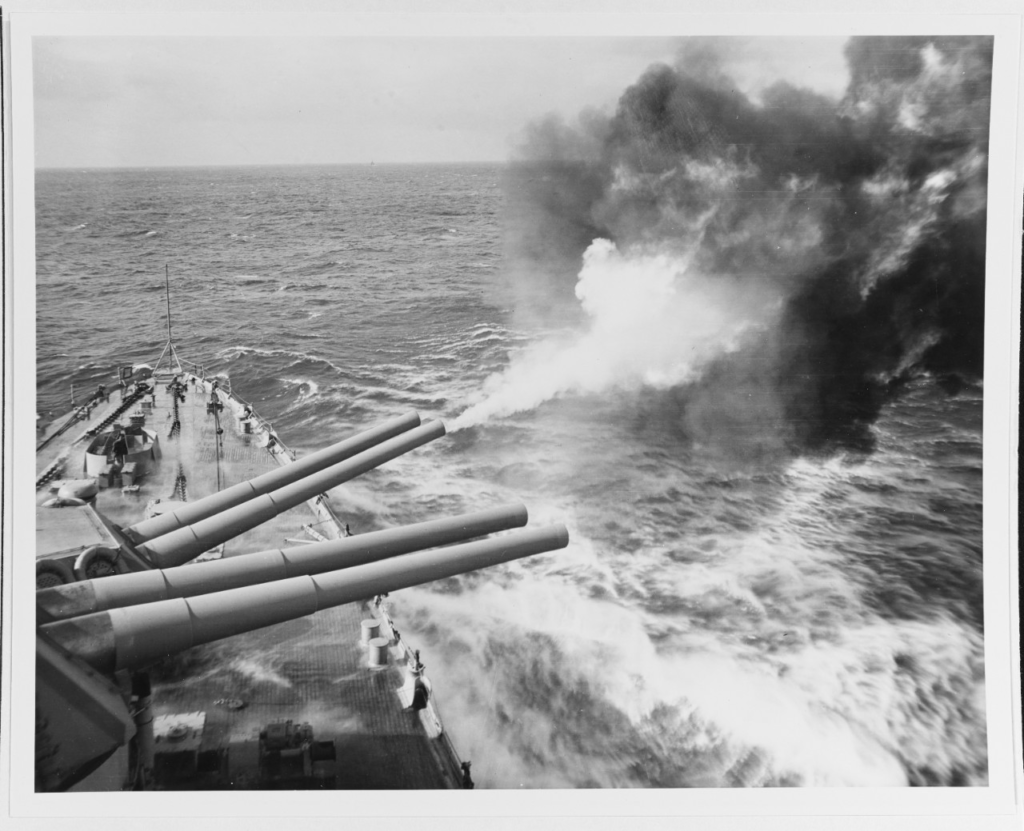
December 7, 1941 and the clouds of war descend on the US Navy at Pearl Harbor, Hawaii in a furious storm of Japanese aircraft. The Colorado is in the Navy Yard at Bremerton, Washington, but is quickly cleared for duty. She will spend most of the summer and fall of 1942 guarding ports along the west coast.
More guard duty in the Fiji Islands to blunt any further incursions by the Japanese would keep her in the South Pacific until her return to Pearl Harbor in September of 1943. The Colorado and her big guns were about to become the Fighting Ship she was designed to be.
Tarawa, beginning November 20, ending November 29, the Colorado and her 16 inch guns would rain death and destruction on the Japanese stronghold before the Marines captured this remote atoll.
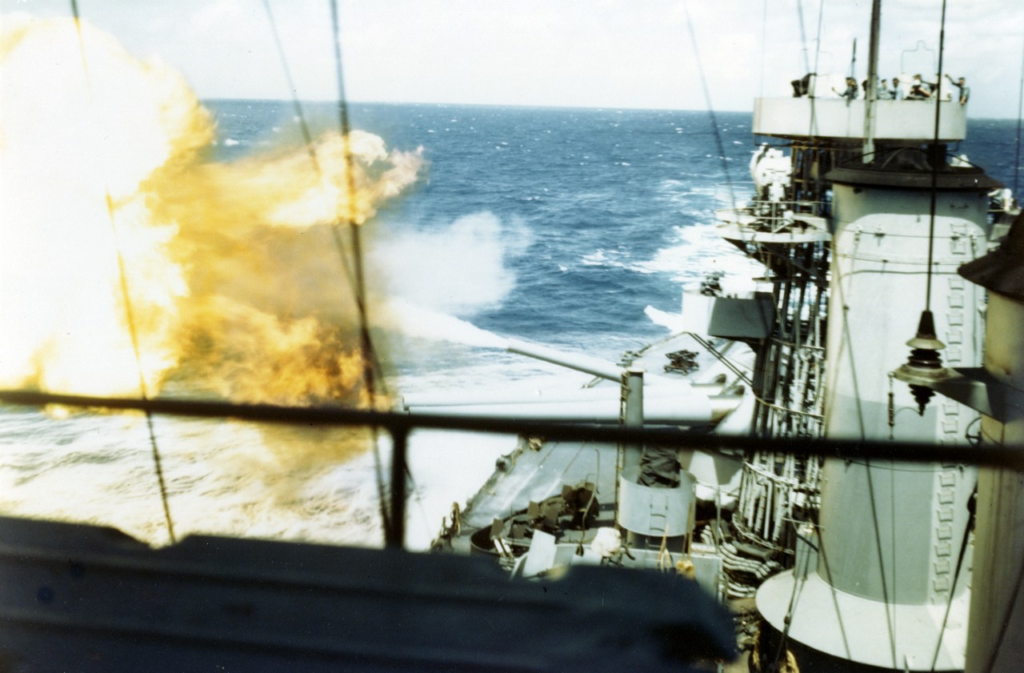
17 months of non-stop duty with a short visit to the west coast and it was back to duty as the Navy prepared for the invasion of the Marshall Islands. Departing Hawaiian waters January 22, her arrival off Kwajalein Atoll to support troop landings January 31, 1944 came to a quick close by February 4th. Eniwetok was next in the Marshall group, from February 15 to the 23rd, her guns rained death and ruin on the Japanese. After a short stop at Pearl Harbor, she entered Puget Sound March 13, 1944.
It was sometime during this time while the Colorado was in Puget Sound that Melvin L. (Mel/Dad) Brady, was assigned aboard the USS Colorado. Like many of the Greatest Generation, Dad was reticent to talk about his Navy Service; but little snippets would leak out over the years. The immediate family, (his wife and daughters) knew he went to Boot Camp at Camp Farragut Idaho; that he learned to swim in the cold water of Lake Pend Oreille; that he trained as a fireman, but little else. The rest of the Colorado’s story is part of his story as well.
The Colorado departed Puget Sound April 30, 1944 to join the assault in the Marianas arriving off Saipan in mid June. Her guns would dominate the Saipan and Guam campaigns, but a stunning return of fire by Japanese gunners on Tinian would severely damage the Colorado leaving 43 men dead and 198 wounded. Before they were silenced they had placed 22 hits on the Colorado; despite heavy damage she continued to duel with the shore batteries and troop support for the advancing Marines. She would stay on station till August 3, 1944 young Mel Brady and the Colorado had survived their baptism of fire.

The damage sustained in the Tinian exchange required approximately 6 weeks to repair. During this time the crew was allowed long overdue liberty and shore leave.
It was during this lay-over our hero relates a liberty in Seattle. As he loitered about in Seattle’s historic Pioneer Square, the Navy Shore Patrol arrived and was arresting any sailor who could not stand up. Dad said the only thing that kept him out of the brig was a handy lamp post. That lamp post still stands in Pioneer Park.
Meanwhile the war dragged on, the Colorado and her well rested crew departed Puget Sound October 9, 1944. Returning to the fray November 17, 1944 assigned to Leyte Gulf operations, she would be attacked by 2 Kamikaze Aircraft sustaining damage but the plucky crew managed to make repairs while the ship carried out her mission of protection. In early December her guns would be in action in Lingayen Gulf supporting landings and would be damaged by shore batteries before they could be silenced.
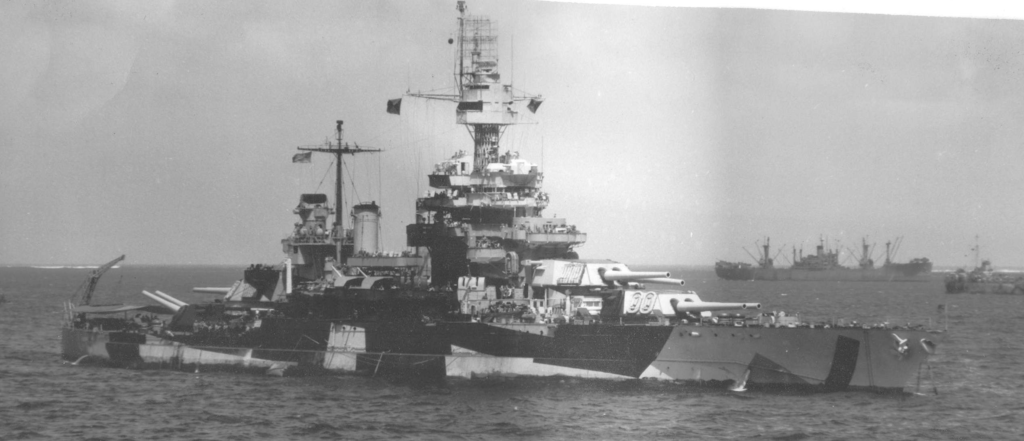
In three months of action, despite Kamikaze attacks and damage from shore batteries, her crew kept the fighting Colorado at her station. It was not without sacrifice, 37 dead and 123 wounded. She would return to Ulithi Island in the Western Carolines for repairs.
In late March, 1945 the 16 inch guns of the Colorado would begin the bombardment of Okinawa. In addition to her duties as a siege platform for her guns, she also was part of the umbrella of fire against the near continual Kamikaze attacks. She would be off Okinawa for 63 days, delivering support fire for both the surface ships and the advancing Marines.
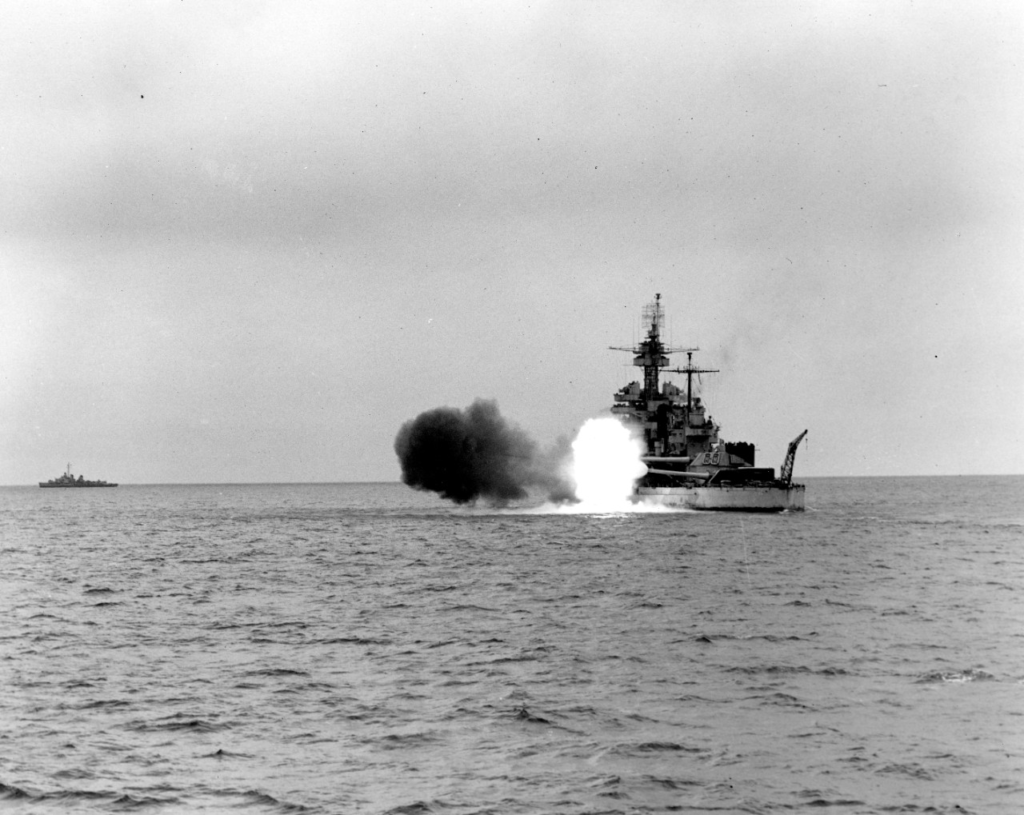
After the successful invasion of Okinawa the Colorado would be assigned duty off the coast of Luzon to interdict Japanese troop movements, but back to Okinawa by August 3, 1945, to prepare for the invasion of Japan. August 6, the atomic bomb is dropped on Hiroshima followed by the second atomic bomb being dropped on Nagasaki. The Colorado was in Okinawa’s Buckner Bay when the Japanese announced they would accept the Potsdam Ultimatum.
August 27, 1945 and the Colorado is part of an advance naval squadron to enter Japanese homeland waters; September 1 and she entered Tokyo Bay, the vanguard for the USS Missouri and General Douglas McArthur. September 20, 1945, her mission as a fighting ship complete, the Colorado began the journey home arriving in Seattle in time for the 1945 Navy Day celebrations (October 27th). The Colorado would make three trips to Pearl Harbor transporting over 6,000 veterans home.
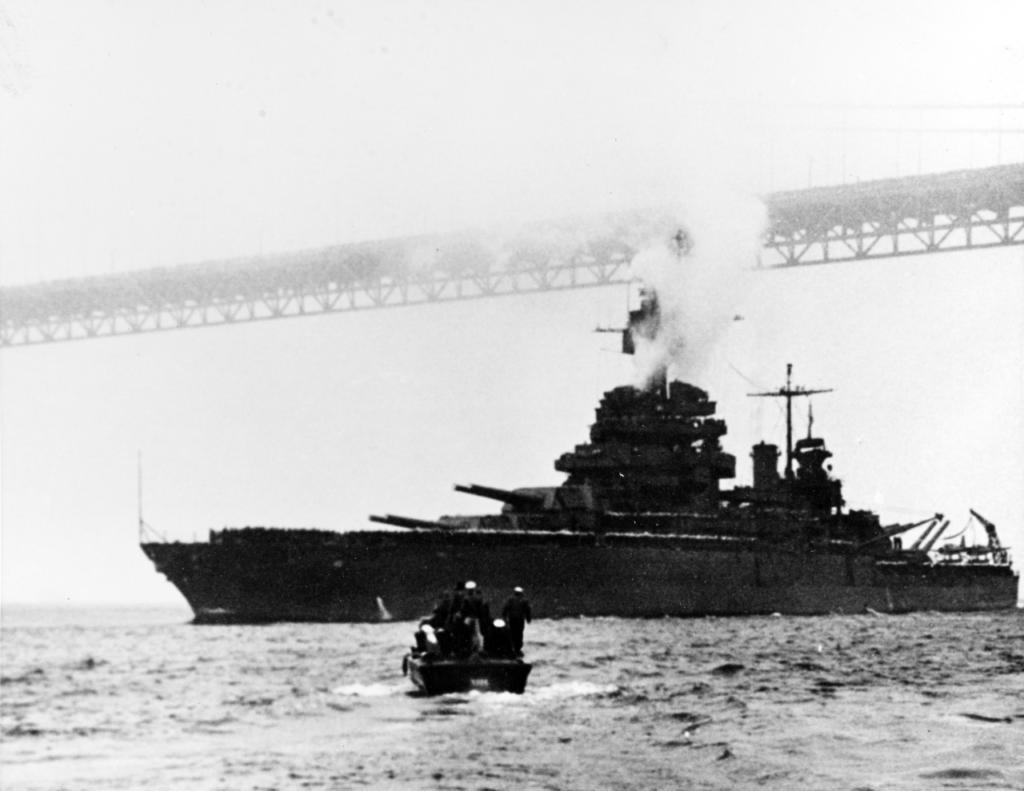
In January of 1946 the Colorado was in Bremerton, Washington to begin the process of deactivation. It was at this point Dad left the USS Colorado to return to the wheat country of eastern Oregon. January 7, 1947, the Colorado is officially placed out of commission.
Of the 204 days the Colorado operated under combat conditions, Dad was aboard her as a “Fireman” some 180 of those combat days. Fire at sea is among the most dreaded of all that can befall a ship. As a former sailor and knowing that ‘firemen’ are part of damage control, a highly dangerous job, I can only marvel at the courage he exhibited.
On April 21st of this year Melvin L. (Mel) Brady joined his departed shipmates, Godspeed Dad
Walt Mow 2016
Editors note: for those of you unfamiliar with naval gun designations, the 16″/45 designation means the gun has a bore diameter or caliber of 16″ and the barrel is 45 ‘calibers’ long. In the case of the 16″/45s on the Colorado that means the barrel is 720″ or 60′ long. For comparison, the current US Navy standard deck gun, the Mk 45, is a 5″/54 or 62.